UV76
Established
Wrayflex I and II
The only breed of British made 35mm SLR camera bodies introduced in the 1950s.
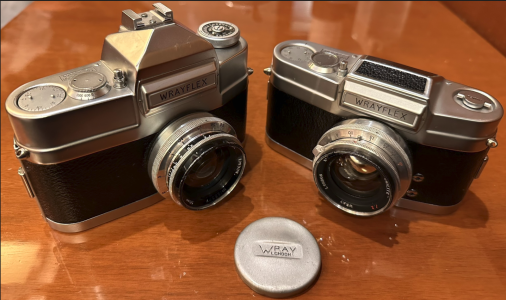
The original Wrayflex I (apparently 850 made) which comes with the frame size of 24 x 32mm is noticeable from the outside as the film counter ends at 40 (Model Ia film countrr ends at 36)
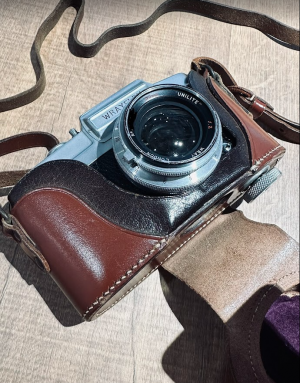
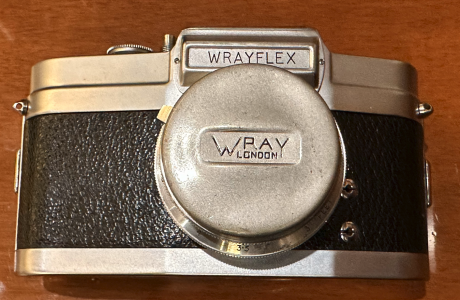
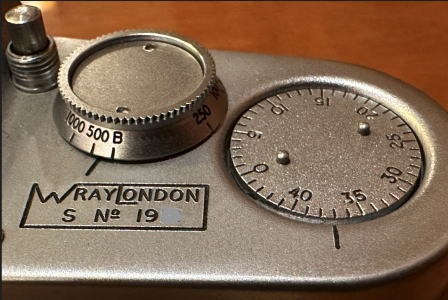
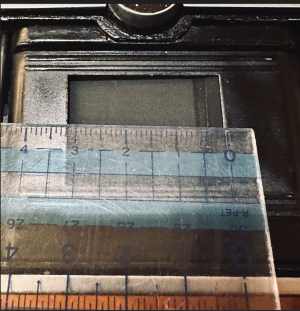
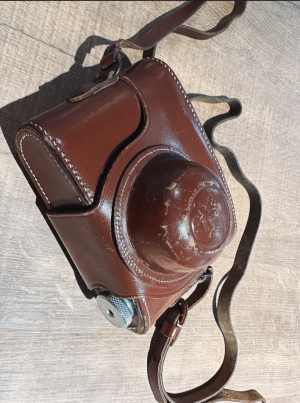
The mirror viewfinders were very dim, and a magnifying circle can be seen on bottom right hand side so that users can focus better on the peripeherals when stopped down. The image is laterally reverse.
Model I viewfinder
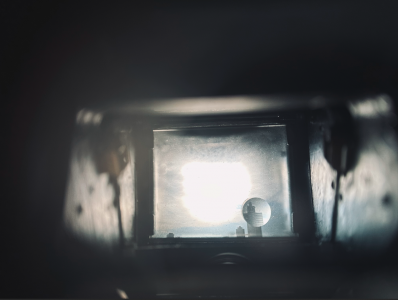
Model II (apparently only about 300 made) has 24 x 36mm frame and comes with a pentaprism which give normal image through the finder. Rewind has been
changed to standard knob system.
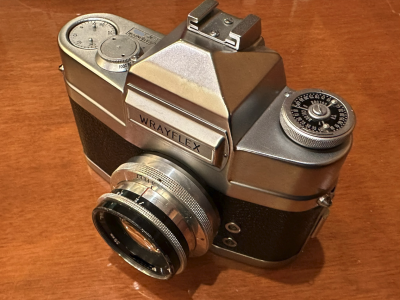
Both Model I and II employ reflex mirror of SLR that jumps simultaneously with the shutter release and the focusing glass. When the shutter is charged, the reflex mirror and focusing glass are lowered into position. Film winding/shutter charge is done using the key on the bottom.
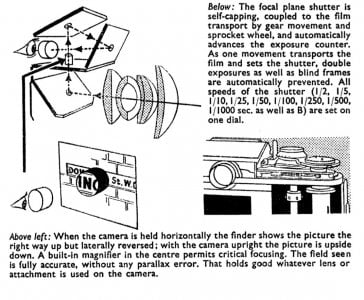
Model II viewfinder
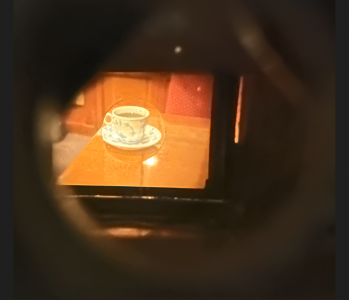
Lens mount has a dimension of 41mm diameter and 1mm pitch. Both cameras came with Unilite 50mm f2 lenses. Other interchangeable lenses were available.
Unilite 50mm f2 (4 groups, 5 elements) with Gauss front element and Topogon formula rear element was designed by C.G. Wynee in 1944 as a modification to a standard Double-Gauss forumula lens. The cemented concave lenses were changed to a steeply bended single concave meniscus lens which optimized total performance within standard FoV, improved center field flatness and decreased astigmatism. Later, Unilite formula was implemented in Carl Zeiss Biometar, Xenotar and Planar 80mm f2.8 of Rolleiflex which have very similar forumla (Carl Zeiss is said to have held the Patent of this design before WWII but the actual production was pushed back after Wray’s Unilite was introduced. Unilite has a thicker concave meniscus element in the 3rd group). Strong blue coating.
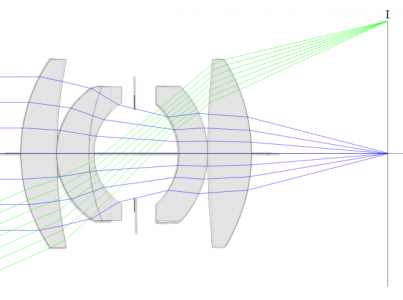
References: oldlens.com, Camera-wiki, Hayata Camera Lab, dpreview.com
The only breed of British made 35mm SLR camera bodies introduced in the 1950s.

The original Wrayflex I (apparently 850 made) which comes with the frame size of 24 x 32mm is noticeable from the outside as the film counter ends at 40 (Model Ia film countrr ends at 36)





The mirror viewfinders were very dim, and a magnifying circle can be seen on bottom right hand side so that users can focus better on the peripeherals when stopped down. The image is laterally reverse.
Model I viewfinder

Model II (apparently only about 300 made) has 24 x 36mm frame and comes with a pentaprism which give normal image through the finder. Rewind has been
changed to standard knob system.

Both Model I and II employ reflex mirror of SLR that jumps simultaneously with the shutter release and the focusing glass. When the shutter is charged, the reflex mirror and focusing glass are lowered into position. Film winding/shutter charge is done using the key on the bottom.

Model II viewfinder

Lens mount has a dimension of 41mm diameter and 1mm pitch. Both cameras came with Unilite 50mm f2 lenses. Other interchangeable lenses were available.
Unilite 50mm f2 (4 groups, 5 elements) with Gauss front element and Topogon formula rear element was designed by C.G. Wynee in 1944 as a modification to a standard Double-Gauss forumula lens. The cemented concave lenses were changed to a steeply bended single concave meniscus lens which optimized total performance within standard FoV, improved center field flatness and decreased astigmatism. Later, Unilite formula was implemented in Carl Zeiss Biometar, Xenotar and Planar 80mm f2.8 of Rolleiflex which have very similar forumla (Carl Zeiss is said to have held the Patent of this design before WWII but the actual production was pushed back after Wray’s Unilite was introduced. Unilite has a thicker concave meniscus element in the 3rd group). Strong blue coating.

References: oldlens.com, Camera-wiki, Hayata Camera Lab, dpreview.com
TenEleven
Well-known
Very nice and informative thread. The Wray cameras (and especially lenses!) have always fascinated me as they are one of the few makers that - at least for lens design went a pretty unique path for their main 50.
The depiction of the lens is also pretty unique in my opinion. The coatings of my copy are not in ideal but still serviceable condition, so some of the flare may stem from that. Not sure, since this is such a rare lens and thus samples are hard to come by.
Optically, for a lack of a better way to describe, it the "atmosphere" of the lens is superb, even if - on a test-bench level - it may not be the sharpest or most corrected lens ever. Especially at full aperture where the is lots of spherical aberration and some uncorrected field curvature. No ugly astigmatism though! There is minimal distortion, but it's usually well controlled and meets my exacting standards. As a counter example: the LTM Hexar 35/2 while otherwise brilliant has too much distortion for my tastes.
Color expression is neutral, with slightly muted colors, but not as muted as early Leitz lenses.
Anyway, enough babbling - without further ado let me add to the thread by posting some pictures, taken on black and white and color film:
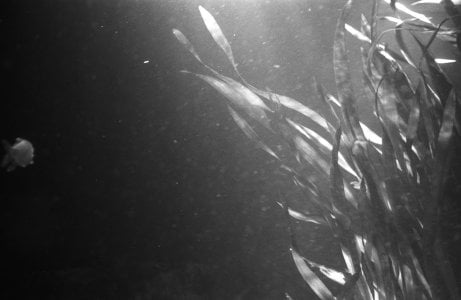
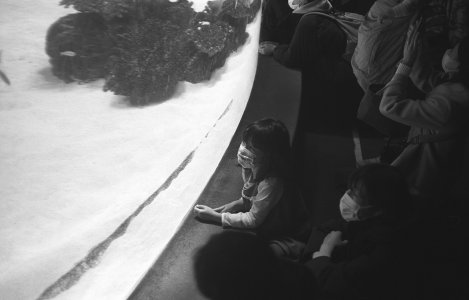
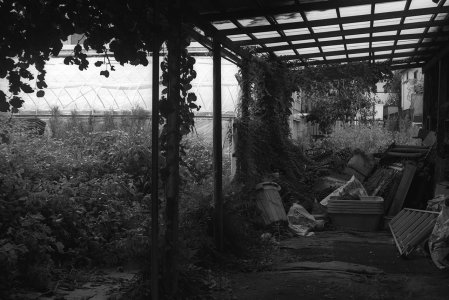
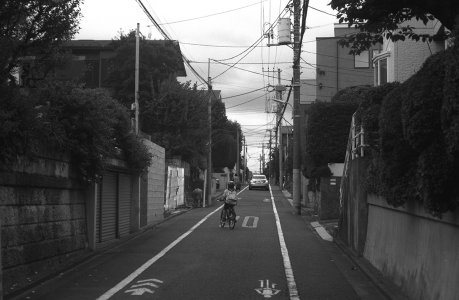
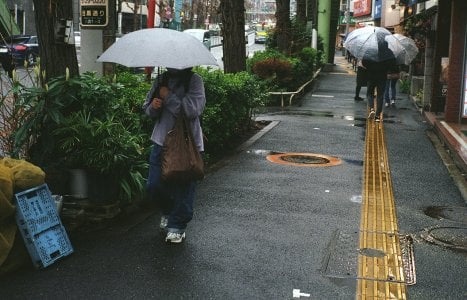
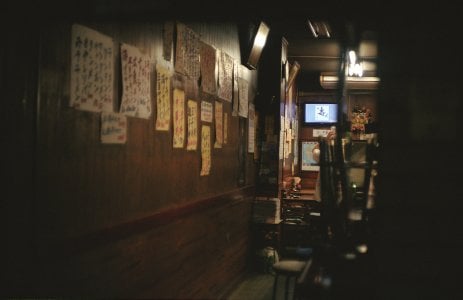
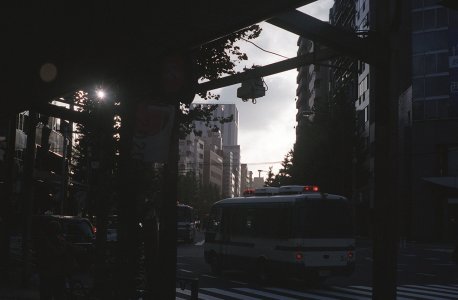
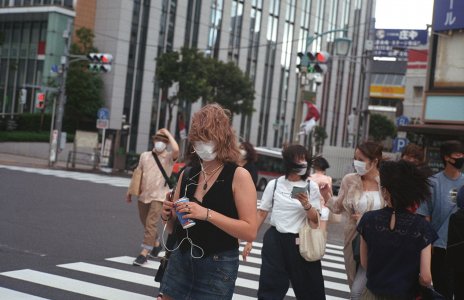
The depiction of the lens is also pretty unique in my opinion. The coatings of my copy are not in ideal but still serviceable condition, so some of the flare may stem from that. Not sure, since this is such a rare lens and thus samples are hard to come by.
Optically, for a lack of a better way to describe, it the "atmosphere" of the lens is superb, even if - on a test-bench level - it may not be the sharpest or most corrected lens ever. Especially at full aperture where the is lots of spherical aberration and some uncorrected field curvature. No ugly astigmatism though! There is minimal distortion, but it's usually well controlled and meets my exacting standards. As a counter example: the LTM Hexar 35/2 while otherwise brilliant has too much distortion for my tastes.
Color expression is neutral, with slightly muted colors, but not as muted as early Leitz lenses.
Anyway, enough babbling - without further ado let me add to the thread by posting some pictures, taken on black and white and color film:








davidswiss
Established
I've often seen these on line at auction but never read a decent review or seen recently taken pictures so thank you for that. Surprisingly good images for a lens that you say is not in tip top condition.
UV76
Established
Thank you for sharing these are lovely photos. Bokeh is soft, and as you mention the combination of neutral contrast and soft blur depicts a superb “atmosphere”.Very nice and informative thread. The Wray cameras (and especially lenses!) have always fascinated me as they are one of the few makers that - at least for lens design went a pretty unique path for their main 50.
The depiction of the lens is also pretty unique in my opinion. The coatings of my copy are not in ideal but still serviceable condition, so some of the flare may stem from that. Not sure, since this is such a rare lens and thus samples are hard to come by.
Optically, for a lack of a better way to describe, it the "atmosphere" of the lens is superb, even if - on a test-bench level - it may not be the sharpest or most corrected lens ever. Especially at full aperture where the is lots of spherical aberration and some uncorrected field curvature. No ugly astigmatism though! There is minimal distortion, but it's usually well controlled and meets my exacting standards. As a counter example: the LTM Hexar 35/2 while otherwise brilliant has too much distortion for my tastes.
Color expression is neutral, with slightly muted colors, but not as muted as early Leitz lenses.
Anyway, enough babbling - without further ado let me add to the thread by posting some pictures, taken on black and white and color film:
View attachment 4833475View attachment 4833476View attachment 4833477View attachment 4833478View attachment 4833479View attachment 4833480View attachment 4833481View attachment 4833482
Share:

